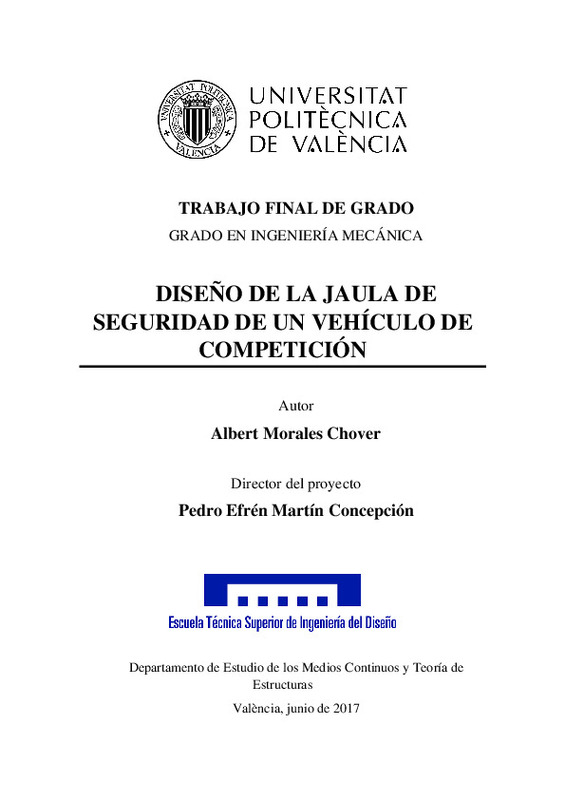|
Resumen:
|
This project focuses on the process of developing a safety cage for a rally car.
This is how we explain the process: we collect all the necessary information to create the correct configuration of the geometry. Such ...[+]
This project focuses on the process of developing a safety cage for a rally car.
This is how we explain the process: we collect all the necessary information to create the correct configuration of the geometry. Such thing involves, on the one hand, carrying out a study of the internal measures of the vehicle and, on the other hand, collecting all the regulations concerning this kind of projects, which include from the size limitations and the permitted materials. The rules about safety measures that must be respected throughout the entire construction and installation process are also included in the project. Moreover, an analysis of the different options allowed for the welding is carried out, to choose the one fits the best with the properties of the base material used to produce steel profiles.
The design is developed in different phases, starting from a basic geometric configuration with the mandatory installation elements. For the design, we use a CAD tool (SolidWorks 2016). After that, we show the analysis of the Von Mises strengths and the deformations in the structure during the execution of the two tests regulated in Annex J of the FIA. These are necessary and compulsory to homologate the design.
The final result is a geometry consisting of 3 different tubular profiles made with 25CrMo4 that clearly guarantees the minimum safety conditions required for its homologation. This is due to the fact that the design is developed to offer excellent safety conditions to the detriment of the weight of the structure.
[-]
Este trabajo se centra en el proceso de desarrollo de una Estructura de seguridad para un vehículo de competición de rally.
Para explicar dicho proceso, se recoge toda la información necesaria para generar de forma ...[+]
Este trabajo se centra en el proceso de desarrollo de una Estructura de seguridad para un vehículo de competición de rally.
Para explicar dicho proceso, se recoge toda la información necesaria para generar de forma correcta la geometría. Ello implica, por un lado, realizar un estudio de las medidas interiores del vehículo y, por otro lado, recopilar toda la normativa referente a este tipo de proyectos, desde las limitaciones geométricas y los materiales permitidos. También se incluye la normativa referente a las medidas de seguridad que se deben respetar durante todo el proceso de construcción e instalación. Asimismo, se lleva a cabo un análisis de las distintas opciones permitidas para generar las operaciones de soldadura, y así elegir finalmente aquella que se ajusta mejor a las propiedades del material base de fabricación de los perfiles de acero.
El diseño se encuentra desarrollado por etapas, partiendo de una configuración geométrica base con los elementos de instalación obligatorios. Para el diseño se usa una herramienta CAD (SolidWorks 2016). Seguidamente se muestra el análisis de las tensiones de Von Mises y las deformaciones generadas en la estructura durante la ejecución de cada uno de los dos ensayos reglamentados en el Anexo J de la FIA. Estos son necesarios y obligatorios para permitir la homologación del diseño.
El resultado final es una geometría constituida por 3 perfiles tubulares diferentes fabricados con 25CrMo4 que garantiza de forma holgada las condiciones de seguridad mínimas exigidas para su homologación. Esto se debe a que se ha desarrollado un diseño orientado a ofrecer unas excelentes condiciones de seguridad en detrimento del peso de la estructura.
[-]
|





![MS Powerpoint file [PP]](/themes/UPV/images/mspowerpoint.png)
![[File]](/themes/UPV/images/mime.png)


